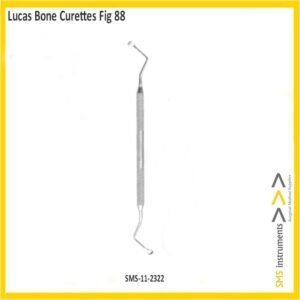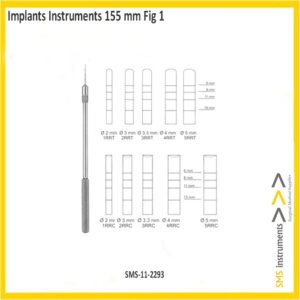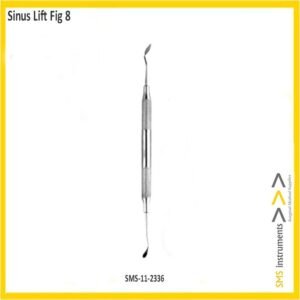Description
Grinders For Autogenous
Dental Instruments
SMS Instrument Bone Crusher for large bone pieces used to obtaina bone slurry or powder for use as a bone matrix for bone regeneration or bone grafting.
| Surname | Grinders For Autognous |
| Size / Model / Figure | |
| curvature | Cylinder / serrated |
| Finishing | Mirror Polish Finishing |
| Instrument Type | Dental Implants Instruments |
| Material | Stainless Steel |
| Disposable or Reusable | Reusable |
| Rusting Prevention | Passivation Processed |
| Cleaning | Ultrasonic Cleaned |
| Sterile or Non-Sterile | Non-Sterile |
| Latex or Latex-Free | Latex-Free |
| Test Performed | Boil, Shape & Performance Test |
| Grade | Premium OR-Grade |
| Packing | Individually Packed in SMS Brand printed Poly-sleeve |
Implants Instruments
A Dental Implants Instrument are artificial components for replacing missing teeth. In contrast to bridge and denture, implants have similar strength and external occlusal functional ability to natural teeth. An implants is made up of a fixture, abutment and crown. When the fixture is specially surface treated this makes the bone well and here to the metal (Mainly titanium) and is called Osseo integration.
Dental implants are uniquely designed to provide ideal primary stability in various clinical situations, in all types of bone. The macro-geometry of our implants, allows less bone preparation, more bone preservation, resulting in high torque insertion, better primary stability and a more predictable success rate, with any surgical approach: two stage, one stage, immediate replacement, and immediate loading. The micro-geometry of Cortex Implants, increase the surface area of the implant 4 times more, allowing better adhesion of the fibrin filaments and improving the osteo-conductivity of the implant’s surface. Several dental implant designs provide solutions for any bone types for any kind of final restorations.
Dental implants are metal posts or frames that are surgically positioned into the jawbone beneath your gums. Once in place, they allow your dentist to mount replacement teeth onto them.
Dental Implants Work
Implants fuse to your jawbone, they provide stable support for artificial teeth. Dentures and bridges mounted to implants won’t slip or shift in your mouth — an especially important benefit when eating and speaking. This secure fit helps the dentures and bridges — as well as individual crowns placed over implants — feel more natural than conventional bridges or dentures. Dental implants come in different sizes, heights and types. Your dental implant expert can help you determine which option is best for you, depending on your particular needs.
Types of implants
There are two main types of implants:
Endosteal: These dental implants are placed in the jawbone. Typically made of titanium and shaped like small screws, they are the most commonly used type of implant. These are surgically implanted directly into the jawbone. Once the surrounding gum tissue has healed, a second surgery is needed to connect a post to the original implant. Finally, an artificial tooth (or teeth) is attached to the post-individually, or grouped on a bridge or denture. A root form implant – also called an endosteal implant – is used when there is plenty of width and depth of the jawbone. If there is jawbone deterioration, a root form implant is usually not the best choice.
Subperiosteal: These dental implants are placed under the gum but on, or above, the jawbone. This type of implant may be used in patients who do not have enough healthy natural jawbone and cannot, or do not want to, undergo a bone augmentation procedure to rebuild it. These consist of a metal frame that is fitted onto the jawbone just below the gum tissue. As the gums heal, the frame becomes fixed to the jawbone. Posts, which are attached to the frame, protrude through the gums. As with endosteal implants, artificial teeth are then mounted to the posts. The implant is placed surgically into the upper or lower jaw and a “healing cap” placed over the implant to protect it. In some cases, the dentist may need to graft bone to the implant site to help strengthen it for placement of a dental implant. A standard implant can be used to replace a single tooth, or two implants can be placed to create a bridge without impacting surrounding teeth. Dental implants are the closest possible replacement to an actual tooth.
Mini and Micro Implants
Mini implants are only a few fractions of a millimeter smaller than regular implants. They use smaller bolts and take up less space. Micro implants, while not commonly used, are even smaller. They are used when the space between teeth is very small, but the patient would like a very secure tooth placed in there instead of a less stable bridge.









